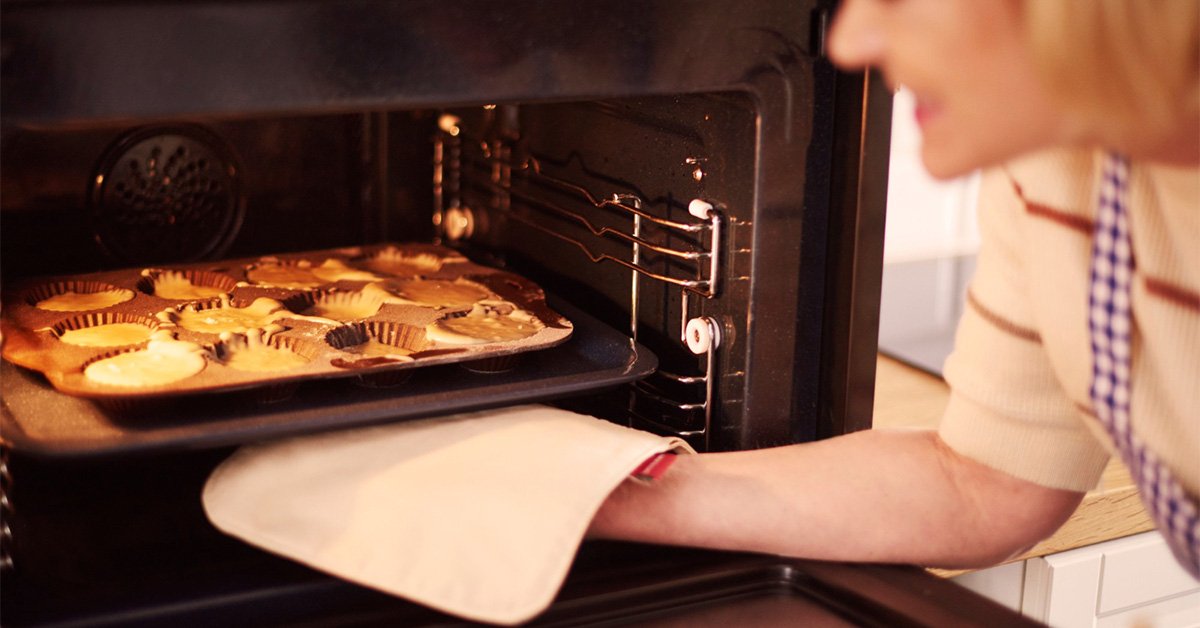Best Haier Refrigerators (For Low Electricity Consumption)
When it comes to choosing a refrigerator for your home, two factors often take center stage: reliability and energy efficiency. Haier, a well-known brand in the world of appliances, has carved a niche for itself by producing refrigerators that not only keep your food fresh but also help you save on electricity bills. In this article, we will delve into the best Haier refrigerators known for their low electricity consumption.
Why Energy Efficiency Matters
Before we dive into our top picks, let’s understand why energy efficiency is crucial when choosing a refrigerator. Refrigerators are among the most energy-consuming appliances in our homes, running 24/7. An energy-efficient refrigerator not only reduces your carbon footprint but also saves you money in the long run.
Top Haier Refrigerators for Low Electricity Consumption
The chart below lists the Start Up and Running amps and watts:
| Model | Door Swing | Start Up Amps/Watts | Running Amps/Watts |
| DD410RS 5.4 cubic ft. | drawer | 1.0/ | |
| HC17SF15R 1.7 cubic ft. | Hinge on Right | 6.3 / 724.5 | 1.4 / 161 |
| HC27SF22R 2.7 cubic ft. | Hinge on Right | 6.3 / 724.5 | 1.5 / 172.5 |
| HC27SG42RB | 6.3 / 724.5 | 1.5 / 172.5 | |
| HC31TG42S 3.1 cubic ft | Hinge on Right | 4.0 / 460 | 1.1 / 126.5 |
| HC32SA42S 3.2 cubic ft. | Reversible | 3.4 / 391 | 0.8 / 92 |
| HC32SF10S | Reversible | 3.4 / 391 | 0.8 / 92 |
| HC32TW10SV / HC32TW10SB | 4.0 / 460 | 1.1 / 126.5 | |
| HC33SW20RB | 4.5/ | 1.3/ | |
| HC33TF10S | Reversible | 6 / 690 | 1.3 / 149.5 |
| HC40SG42S 4.0 cubic ft. | Reversible | 3.4 / 391 | 0.8 / 92 |
| HC45SG42S | Reversible | 6 / 690 | 1 / 115 |
| HC46SF10SV | 6 | 1 | |
| HF35CM23N | 6 / 690 | 1.2 / 138 | |
| HF71CW20W | 6.6 / 759 | 1.7 / 195.5 | |
| IF50CM23MW | 6.6 / 759 | 1.7 / 195.5 | |
| HF71CW10W | 6.6 / 759 | 1.7 / 195.5 | |
| HF71CW33NW | 6.6 / 759 | 1.7 / 195.5 | |
| HF50CW10W | 6.6 / 759 | 1.7 / 195.5 | |
| HF50CW33NW | 6.6 / 759 | 1.7 / 195.5 | |
| HRC2736BWB | 6.3/ | 1.5/ | |
| HRQ16N3BGS | 3 / | 2.3 / | |
| HA10TG21S | 6.0 / 690 | 2.5 / 287.5 | |
| HA10TG31 | 6.0 / 690 | 2.0 / 230 | |
| DD400RS | 6.0 / 690 | 1.0 / 115 | |
| HA12TG21S | 6.0 / 690 | 2.5 / 287.5 | |
| 21 cu ft models | 7.0 / 805 | 1.7 / 195.5 | |
| 18 cu ft models | 7.0 / 805 | 1.7 / 195.5 | |
| HVTEC12DABS | 1.4 / 161 | 1.4 / 161 | |
| HVTEC06/08ABS | 0.8 / 92 | 0.8 / 92 | |
| HVTEC18DABS | 1.4 / 161 | 1.4 / 161 |
Some Most Low Electricity Consumption Refrigerators are;
Haier 3.2 Cu. Ft. Compact Refrigerator
If you’re looking for a compact refrigerator that won’t dent your electricity bill, the Haier 3.2 Cu. Ft. Compact Refrigerator is an excellent choice. With its Energy Star certification, this fridge is designed to operate efficiently while providing ample storage space for your essentials.
Haier 15-Cu.-Ft. French-Door Refrigerator
For larger households, the Haier 15-Cu.-Ft. French-Door Refrigerator strikes the perfect balance between storage capacity and energy efficiency. Its innovative design ensures that you can store more without compromising on electricity consumption.
Haier 10.2 Cu. Ft. Top-Freezer Refrigerator
The Haier 10.2 Cu. Ft. Top-Freezer Refrigerator is a testament to Haier’s commitment to sustainability. This model boasts impressive energy ratings and a spacious freezer compartment, making it ideal for families who love to stock up on frozen goods.
Factors Contributing to Low Electricity Consumption
There are several factors that can contribute to low electricity consumption in refrigerators:
- Energy Efficiency Rating (EER): The most significant factor is the energy efficiency rating of the refrigerator. Look for models with a higher EER, as they are designed to consume less electricity for the same cooling capacity.
- Size and Capacity: Smaller refrigerators generally consume less electricity than larger ones. Choose a size that fits your needs to avoid excess energy usage.
- Temperature Settings: Setting the refrigerator and freezer temperatures to the recommended levels, usually around 37°F (3°C) for the fridge and 0°F (-18°C) for the freezer, ensures efficient operation.
- Proper Ventilation: Ensure that there is adequate space around the refrigerator for proper ventilation. Overheating due to poor airflow can lead to increased energy consumption.
- Regular Maintenance: Keeping the coils and condenser clean and free from dust and debris helps the refrigerator run efficiently.
- Door Seals: Check the door seals for any leaks. A damaged or ineffective seal can lead to cool air escaping, causing the refrigerator to work harder and consume more electricity.
- Location: Avoid placing the refrigerator near heat sources like ovens or direct sunlight, as this can make the unit work harder to maintain the desired temperature.
- Frequent Opening: Minimize the number of times you open the refrigerator door. Frequent openings allow cold air to escape, leading to more energy consumption.
- Organized Interior: Organizing the contents of your fridge and freezer can improve air circulation and reduce the need for the compressor to work excessively.
- Energy-Saving Features: Some modern refrigerators come with energy-saving features like LED lighting and inverter compressors, which can further reduce energy consumption.
- Old vs. New Appliances: Older refrigerators tend to be less energy-efficient than newer models. Upgrading to a more modern, energy-efficient refrigerator can result in significant energy savings.
- Usage Patterns: Consider your usage patterns. If you frequently stock and remove items from the refrigerator, it may need to work harder to maintain temperature, leading to higher energy consumption.
- Vacation Mode: If you’re going on an extended vacation, switch your refrigerator to vacation mode or empty it and unplug it to save energy.
- Energy-Efficient Settings: Some refrigerators have energy-saving modes that can be activated to reduce energy consumption during periods of lower usage.
By paying attention to these factors and making conscious choices, you can reduce the electricity consumption of your refrigerator, saving energy and lowering your utility bills.
Tips for Maximizing Energy Efficiency
1. Keep the Fridge Full
A well-stocked refrigerator maintains its temperature more efficiently. Even if you don’t have a lot of food, you can fill empty spaces with containers of water.
2. Set the Temperature Correctly
Ensure that your refrigerator and freezer are set to the recommended temperature settings. A higher than necessary temperature setting can lead to increased energy consumption.
3. Regular Maintenance
Clean the coils, check the door seals, and defrost the freezer when needed. Regular maintenance ensures that your refrigerator operates optimally.
Conclusion
When it comes to choosing a refrigerator that combines reliability and low electricity consumption, Haier stands out as a top choice. With innovative features, inverter technology, and a commitment to sustainability, Haier refrigerators offer a winning combination. Investing in an energy-efficient refrigerator not only benefits your wallet but also contributes to a greener planet.
Frequently Asked Questions
1. Are Haier refrigerators expensive?
Haier offers a wide range of refrigerators to suit various budgets. While some premium models may be relatively more expensive, there are also budget-friendly options available.
2. What is the average lifespan of a Haier refrigerator?
Haier refrigerators typically have a lifespan of 10 to 15 years, depending on usage and maintenance.
3. Do Haier refrigerators come with warranties?
Yes, most Haier refrigerators come with warranties that vary in duration depending on the model. Be sure to check the warranty details before making a purchase.
4. Can I use a Haier refrigerator in my garage?
Yes, Haier refrigerators are designed to operate in a wide range of temperatures, making them suitable for garage use.
5. How can I find the energy efficiency rating of a Haier refrigerator?
You can find the energy efficiency rating, often indicated by the Energy Star label, in the refrigerator’s product specifications or on the manufacturer’s website.
The Bottom Line
In conclusion, Haier refrigerators offer a range of options for those seeking to reduce electricity consumption without compromising on performance and convenience. Make an informed choice to benefit both your wallet and the environment.







